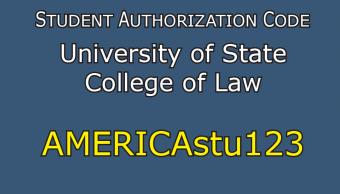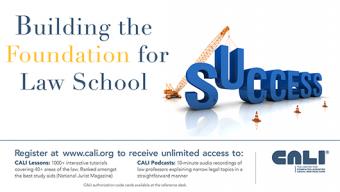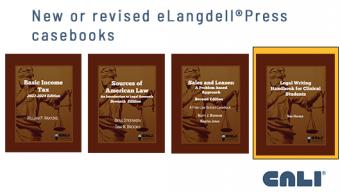Do Not Miss Out on CALI Resources Available. Register Today!
Registering for CALI (Center for Computer-Assisted Legal Instruction) is essential for any law student in Building the Foundation for Law School Success. CALI offers a wide array of tools and materials to enhance aspiring legal professionals' learning experience at no cost to member schools. Students gain unrestricted access to diverse interactive lessons covering many legal topics by registering. This access equips students with the ability to reinforce their classroom learning, delve deeper into complex legal concepts, and sharpen their analytical skills.
Please visit the law library for your school's student authorization code required to complete the registration.





